Glimpses of Healing and Hope
Glimpses of Healing and Hope

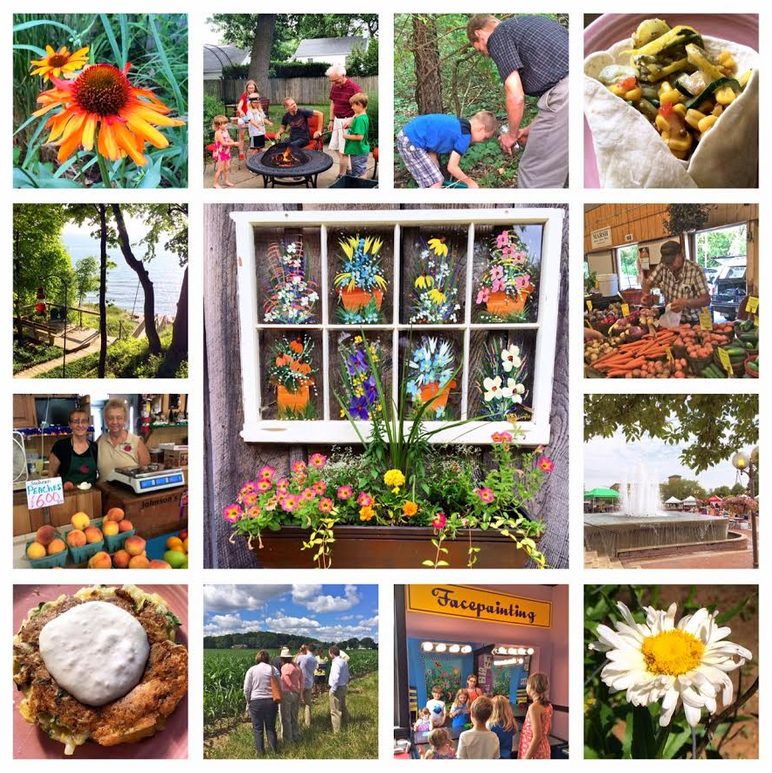
July 3, 2017
By: Jane Bishop Halteman
When national leaders continue to disappoint and the world around us looks to be in steady decline, what makes your heart sing despite less than desirable circumstances?
I resonate this week with Parker Palmer’s assessment of the July 4 national holiday we will observe tomorrow. “On one hand, I celebrate all that is good about the U.S. and its people. On the other hand, I grieve the fundamental, perhaps even fatal flaws in our democracy that have been revealed by the diseased presidency and politics from which we now suffer,” Palmer says in his July 2 Facebook post.
Before I read Palmer’s musings, however, last week’s tweet torrent threatened to drown me in despair, and I began practicing the spiritual discipline of noticing what brings joy even when the national/world situation seems grim.
My first response was to compose a photo collage of what has energized me these last few weeks…in addition to the documentation of warm memories, I take great delight in making photos the best they can be. This week’s individual photos reveal that nature and family activate my happy places, so the South Bend Farmers’ Market, our own garden, and Matt and Jen’s new CSA, offered lots of fresh produce last week to create tasty summer dishes, which I love to photograph as well as eat. My once- or twice-daily visits to monitor blossoms on our property provide Instagram and Facebook connections via photos to other nature lovers. Bodies of water, like Lake Michigan and our own Saint Joe River, always lift my spirits.
Weekly visits with family fuel my obsession to document and chronicle the growing-up years of the grandkids. Spending quality time with them at the library or Menno-Hof or the Saint Joe, MI, splash pad or Curious Kids' Museum or roasting marshmallows around our backyard brazier make lasting memories for all of us.
Learning with fellow KRMCers about soil during our intergenerational nature-related formation hour last Sunday presented another happy moment and photo opportunity as we gathered evidence to substantiate sharings from this blog post about Kingdom teachings from soil.
Connections, even to folks I do not know in person, make my heart sing. A Facebook friend whom I have not met except by phone walked me through upgrading security settings when she noticed my profile had been cloned last week. An Instagrammer I follow who claims color as her “superpower” brings me joy every day with her vivid posts, profiling her love of life in London. I treasure these interactions, especially when it feels like the world is collapsing in on itself and other countries’ trust in US leadership is falling to new lows, according to a recent Pew Research Center poll.
Whenever I can, I attend South Bend’s Fridays by the Fountain in front of the Morris Performing Arts Center. This past week’s band did not disappoint, particularly after I noticed an aging gentleman (way beyond my years anyway) dancing by himself to Proud Mary. He wandered off when that number ended, but couldn’t resist hanging around a while longer for These Boots Are Made for Walking.
Sitting on a ledge in the shade, sheltered from the hot sun, I watched happy human interactions unfold before me as a child and two older women took seats on the steps nearby. The child’s apple rolled away, and I imagined it might get tossed. Happily, one of the grandmas poured her own carbonated beverage over the apple and returned it to the child. The other grandma dipped her scarf in the nearby fountain to clean the child’s face after sandwich bites.
Folks nearby enjoyed the two-year-old’s rollicking movement to Some Kind of Wonderful and Sweet Home Alabama (which the band changed to Chicago for the occasion) and her happy leaping down the stairs, jumping proudly from the last step to the ground. She warmed to her audience’s cheers and put on a magnificent show for us; the woman on the ledge next to me commented out loud that it was such a relief to be away from the political fray for a moment.
Watching the many ethnicities and age groups (from infants in wraps and slings to octogenarians on walkers and canes) enjoying one another on their lunch breaks at Fridays by the Fountain functioned as an antidote to overdosing on the goings-on in Washington, DC. Kids blowing bubbles and families frolicking in the fountain mist, the kind word of a stranger, even the appearance of the Martin’s food truck added to the ambiance that raised my sinking spirits that day.
Where have you glimpsed the Divine in simple human interaction?
Add a comment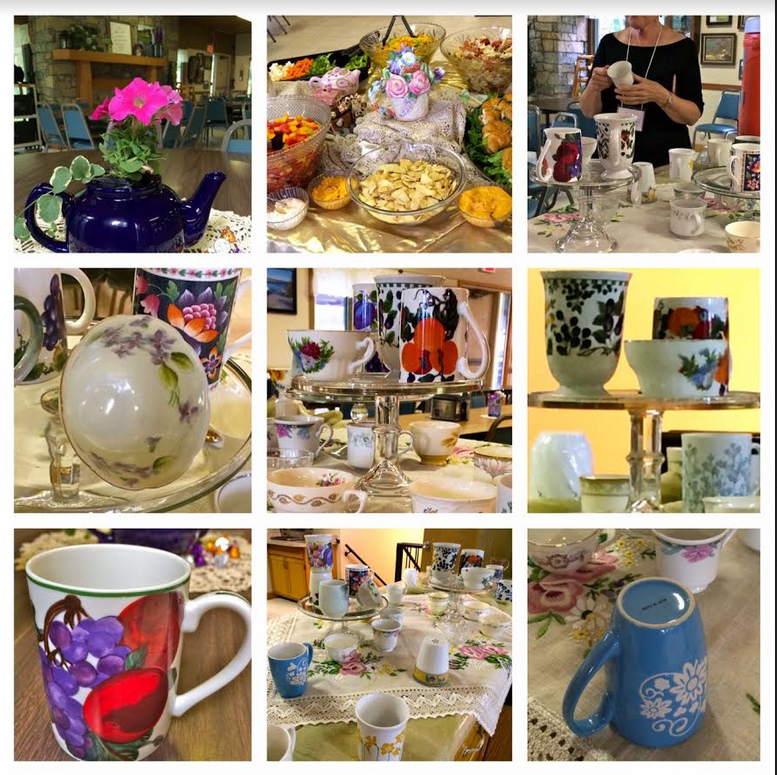
 June 26, 2017
June 26, 2017
By: Jane Bishop Halteman
Indiana-Michigan Mennonite Conference annual sessions took place June 15-17 at Amigo Centre in Sturgis, MI. My long-time good friend Frances offered a meditation at the women’s tea Friday, bringing back fond memories of more than 20 years ago when the two of us attended summer worship courses at Anabaptist Mennonite Biblical Seminary (AMBS) and subsequently were invited by our suburban Chicago congregation to lead weekly evening worship in a contemplative prayer setting.
The bond of our friendship grew as we fashioned themes, calls to worship, and prayers, crafted visuals, developed handouts, and invited readers and song leaders to join us in bringing the 30-minute services to a small group of faithful worshippers.
Frances once remarked to the church’s office administrator, who observed our sometimes time-consuming set-ups, that getting ready for Wednesday prayer was for us as engaging as playing house is for young children. With the enthusiasm of kids working diligently at being grown-ups, we engaged wholeheartedly with each other and our subject matter to create space for quiet reflection and new awareness of the Divine in our midst.
In preparation for her conference presentation based on Joyce Rupp’s book entitled The Cup of Our Life, Frances collected from a variety of thrift stores 45 unique teacups, some bright, some pastel, some stylized, some delicately floral, some mugs, some closer to actual teacups. As participants filled their plates and found a seat, they also chose a cup to use for personal reflection as Frances shared.
During her after-lunch presentation, she asked us to consider why we selected the cup in front of us. Did we find the color or style appealing? Did the cup remind us of something? What about the cup connected to our lives? My mug, painted with brightly colored, realistically sketched fruits still on the vine with leaves and tendrils apparent, brought to mind the importance of authentic connections and taproot nourishment, so germane to generative living. Not until I sat with my mug at home, however, did that realization surface.
Reminding us that “these are very ordinary cups,” Frances asked what about these simple cups might lead us to reflect on the cup of our lives? “Could the cup be a reminder of spiritual thirst? Our need to fill, drink, empty, wash…?”
Urging her listeners to think of the cup as an image of their own uniqueness, Frances quoted author Rupp as saying, “Too often people want someone else’s spirituality rather than their own. I’ve discovered that the more I am conscious and accepting of God’s love for me, the more I can accept myself and the unique way that my spiritual path unfolds. God created each one of us out of love. We are one-of-a-kind, unique, meant to be a light of love in transforming our world.”
Like the mugs and teacups we chose, our lives are sometimes marred by bumps, scratches, cracks, and chips, Frances pointed out, suggesting that rather than seeing these imperfections as flaws, we might view them as opportunities to nurture “understanding and compassion,” thus enabling change and growth.
Quoting author Rupp once again, Frances suggested that “wholeness implies a process, a gradual coming together into a oneness in which all the parts are integrated, but not necessarily perfect. Wholeness or holiness takes a lifetime of ups and downs. It can never be accomplished apart from divine help and guidance or without the interaction of our lives with others.”
Back in the winter of 2007, I led an adult formation class based on The Cup of Our Life, gathering the chapter-by-chapter overviews below from the Rupp book for the class syllabus; ten years later, I find these snippets helpful to ponder anew and am grateful to Frances for bringing this book to mind once again.
The Cup of Life: What would it be like if we believed we were a love song of the Divine? How would it change our presence with others? While healthy spirituality requires a deep belief in our own loveableness, this belief is not always easy to accept. May we find ways to see ourselves as songs of love, cups full of goodness, bringing life to others.
The Open Cup: As we ponder our openness, what brave steps might we take toward emptying those things that perhaps keep our spiritual cups from being filled? How might uncluttering and making space for listening help prepare us to receive and trust?
The Chipped Cup: How might we look at personal flaws, not to criticize, but to see what they can tell us about our relationship with the Divine and with others. How can we befriend parts of our personality we are reluctant to accept?
The Broken Cup: Brokenness can be an instrument for change. Pain received rightly has the power to transform. What would happen if we met our frustrations, pains, and heartaches as we would meet a visitor having something to teach us? What might we learn from those pieces of our lives that are still wanting and incomplete?
The Cup of Compassion: Sometimes compassion asks us to simply ‘be’ with someone. At other times, compassion asks us to ‘do’ something, to give of our time, to speak out for justice, to go the extra mile. And sometimes compassion asks us to receive graciously from another who has need of our receptivity and our vulnerability.
The Blessing Cup: Each of us can be a blessing. When we bless, it is the deep and vast goodness of the Divine in us that blesses another. When we bless, we touch another with something of the Divine. How have you been blessed by the smiles, loving looks, stories and affirmations, concern and care of others?
Add a commentJune 19, 2017
By: Jane Bishop Halteman
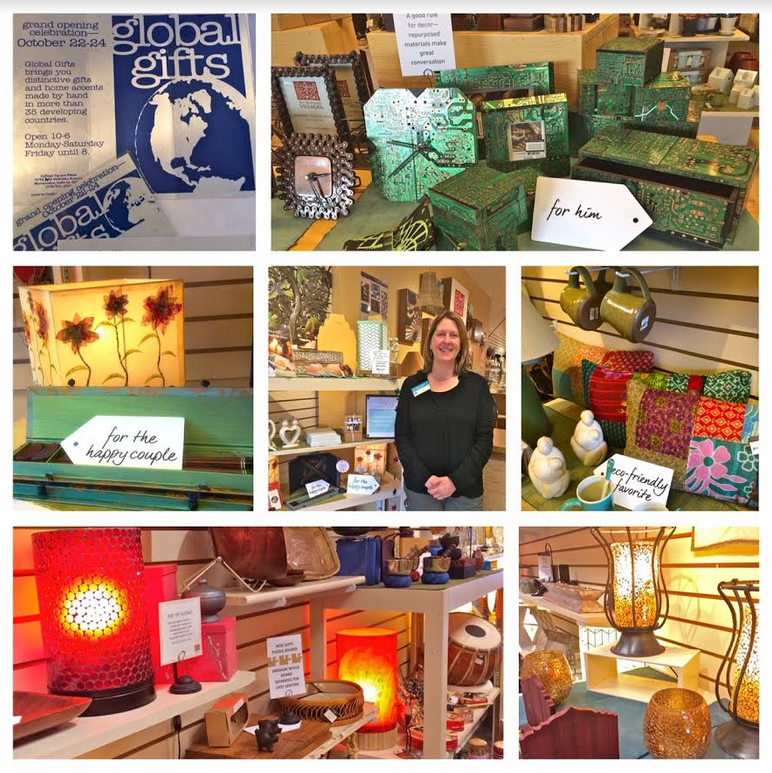
New manager Kelly surrounded by Ten Thousand Villages merchandise…a brochure in upper left announces the store's opening as Global Gifts 25 years ago
Ten Thousand Villages, a fair trade shop located at 214 W. Cleveland Rd., Granger, is in the midst of observing its 25th year in Michiana. Back on April 10, the store welcomed new manager, Kelly Tooker, another reason to celebrate during this milestone anniversary year.
Kern Road Mennonite Church launched the store in 1992 as Global Gifts at a Mishawaka location, buying its inventory from Mennonite Central Committee’s SELFHELP Crafts, a fair trade enterprise which changed its name to Ten Thousand Villages in 1996. According to the mission statement of Villages’ headquarters, “We create opportunities for artisans in developing countries to earn income by bringing their products and stories to our markets through long-term, fair trading relationships.”
Born and raised in the Pacific Northwest, Kelly arrived in Indiana in the fall of 2011 when her husband Bob’s career brought the family here. She is no stranger to Ten Thousand Villages and its merchandise, having been a customer of the Portland, OR, store in the early 90s. Some of her Haitian cut metal wall art from back then has traveled across the country with her and is now on display in their fourth house and third state, according to Kelly.
Kelly and her husband also celebrated their 25th anniversary this year. Kelly is a master gardener, has completed organics certification, and observes permaculture practices in her home garden. Before her move to Indiana, she worked in environmental services and taught natural resources and conservation at the high school level.
She has more than 15 years of experience in retail management, most recently as the garden center manager at Lowe’s, and non-profit experience, most recently with Wellfield Botanic Gardens. She also has small business ownership experience, and managerial experience that includes work with volunteers.
Kelly finds the store’s location a good one, with its proximity to University Park Mall and good foot traffic at Centennial Place, the shopping center where Villages is located. Nearby medical facilities regularly bring in patients from a distance, who stop in at the store before or after their appointments to further augment traffic, she said.
She looks at the potential of local college students as both shoppers and volunteers, and hopes to establish campus ambassadors at Saint Mary’s, Indiana University South Bend, Bethel, Notre Dame, and Holy Cross. Current interest in yoga and meditation also brings customers to Ten Thousand Villages.
Kelly emphasized that “Villages stores complete the fair trade cycle by providing a marketplace." She asks that you 'like' our Ten Thousand Villages Mishawaka Facebook page to help expand organic growth and exposure, and invites you to help with the fair trade vision by making grassroots referrals to family and friends about the store, its merchandise, and its mission, by volunteering in the store, by assisting with marketing, education, and community outreach, and by helping with off-site sales in the tradition of Edna Ruth Byler, the woman behind the Ten Thousand Villages fair trade concept, who began selling Puerto Rican and West Bank needlework from the trunk of her car in 1946.
Starting today, the Mishawaka store’s Monday Facebook post will feature some aspect of its past history, drawn from photos, clippings, and other memorabilia saved in scrapbooks over the years by KRMCer Luella.
“I truly believe that we are in this together. We must be the change we wish to see in the world and in our local communities,” Kelly said in one of her early e-mail communications with board members and volunteers. Speaking as the store’s behind-the-scenes Facebook presence, I find Kelly an accessible, inspiring manager/encourager who takes great delight in equipping volunteers to do their jobs.
If you would like to volunteer with the Mishawaka Villages team, contact Kelly by phone (574.277.4900) or e-mail (This email address is being protected from spambots. You need JavaScript enabled to view it.).
To learn more about how fair trade improves lives and strengthens communities, see Villages’ description of its impact here. And this delightful Mrs. Green’s World podcast offers good listening about the “guilt-free shopping” available at Ten Thousand Villages stores, including more about Edna Ruth Byler.
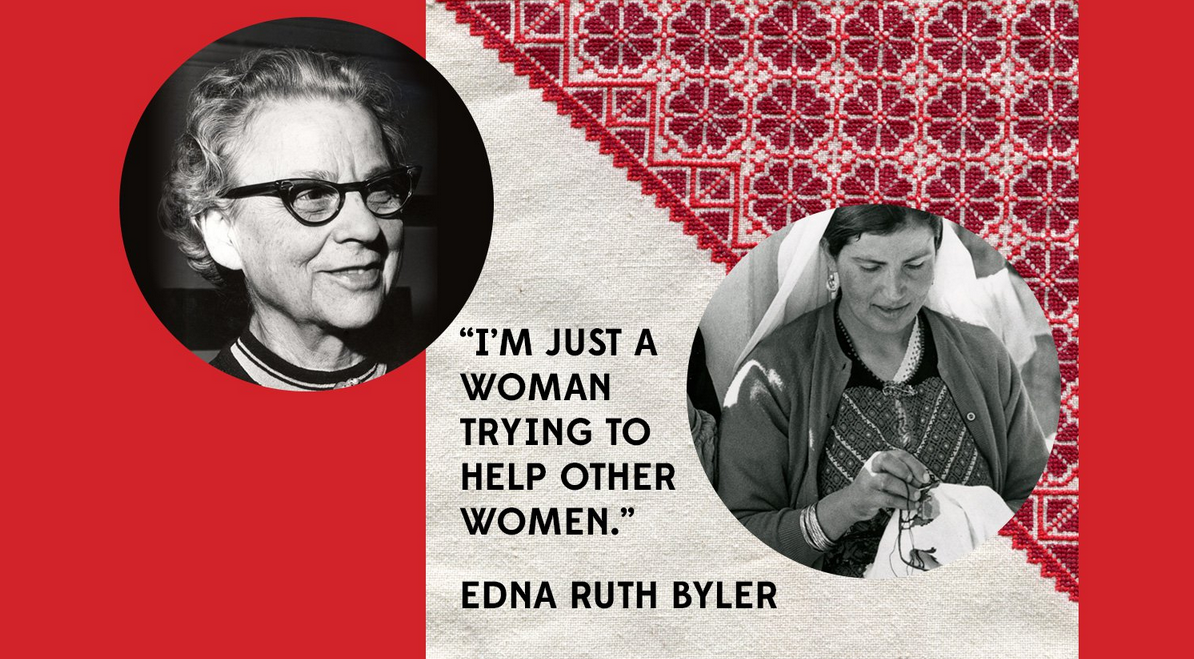
Ten Thousand Villages' image created by headquarters in conjunction with the organization's observance of 70 years in 2016
Add a comment
June 12, 2017
By Jane Bishop Halteman
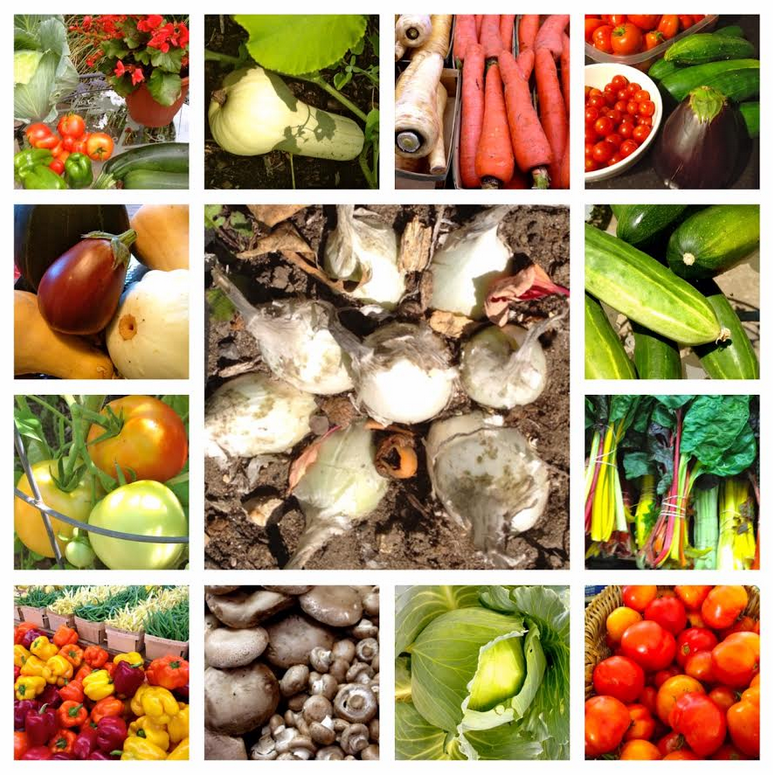
Soil is the source of life
Wendell Berry, in his book The Unsettling of America: Culture and Agriculture, says that “the soil is the great connector of lives, the source and destination of all. It is the healer and restorer and resurrector, by which disease passes into health, age into youth, death into life. Without proper care for it we can have no community, because without proper care for it we can have no life.”
Last week I came across this statement in the Mennonite World Review from Isaac Villegas who said the announcement that the US would be pulling out of its commitment to the Paris climate accord drove him to seek guidance from the Confession of Faith in a Mennonite Perspective: “‘As stewards of God’s earth,’ the Confession states in Article 21, ‘we are called to care for the earth and to bring rest and renewal to the land and everything that lives on it.’ Our vocation is to care for the Earth, to renew the soil, to allow for rhythms of restfulness for flora and fauna. We look after the well-being of God’s creation, the work of God’s hands.”
Yesterday at Kern Road, in the first of a four-part Season of Creation worship series, Danile brought samples of forest, woodland, and farmed field soils and talked about how soil is the source of life and not unlike the Spirit in its vitality. The parable of the growing seed, from Mark 4:26-29, recounts the story of which she spoke in this way (The Message): “Then Jesus said, ‘God’s kingdom is like seed thrown on a field by a man who then goes to bed and forgets about it. The seed sprouts and grows—he has no idea how it happens. The earth does it all without his help: first a green stem of grass, then a bud, then the ripened grain. When the grain is fully formed, he reaps—harvest time!’”
Indeed, a precious commodity, our earth and its soil, according to Danile, who suggested that the parable speaks of abundance as its farmer sows seed and waits, then trusts to a mysterious process, that process stimulated by rain and sun and good soil, soil made rich by earth worm castings and microbes trading nutrients for carbon created by plant roots.
Collaboration and mutual nourishment, she reminded us, are hallmarks of how soil is formed and how the Divine works among us. Janice suggested in her follow-up musings that the parable prods us to think of soil as partner, co-creator with God. “The soil is an agent with God…paying attention to the soil is paying attention to God’s work” in the world.
In Dirt, the Ecstatic Skin of the Earth, William Bryant Logan speaks of the beauty of dirt. “It is the nature of soil to build aggregates: plates or blocks or chunks, full of air and water channels. Gardeners in fact know their soils first and foremost by the size of the particles and the kinds of aggregates they build. Where organic decay and inorganic erosion meet, the conditions exist for a fertile soil, because the two in combination make a tortuous, knotty structure that offers roots the optimum mixture of mineral nutrients, organic nutrients, air, and water.”
Several years ago author Fred Bahnson wrote of his experiences with Catholic, Protestant, Pentecostal, and Jewish faith communities as he explored “the connection between feeding the spirit and feeding the body.” His book, entitled Soil and Sacrament: A Spiritual Memoir of Food and Faith, suggests that “the garden is our oldest metaphor. In Genesis God creates the first Adam from the adamah, and tells him to ‘till and keep’ it, the fertile soil on which all life depends. Human from humus. That’s our first etymological clue as to the inextricable bond we share with the soil. Our ecological problems are a result of having forgotten who we are—soil people, inspired by the breath of God.”
According to Bahnson, “Each of these communities produced some of their own food, making them less dependent than most of us on a centralized, oil-addicted food system that is already showing signs of collapse. That simple act of growing food gave them something most of us don’t possess: agency. They had regained a measure of freedom from anxiety. But there was also something more mysterious at work in these places. A merciful Presence brooding over the bent world. The answer to our hunger for more than just bread.”
Bahnson goes on to say that “many of those I’ve come to meet view soil as a sacrament: a physical manifestation of God’s presence, a channel of Divine grace. They know soil is a portal that joins us to the world to come even while rooting us more deeply in this one.” (See more from Bahnson here in this fascinating excerpt from the prologue of his book.)
I heard Danile and Janice sharing that sentiment in their Sunday sermon as well. Have you experienced soil as portal that not only joins us to the world to come but simultaneously roots us more deeply in this one?
Add a commentJune 5, 2017
By Jane Bishop Halteman
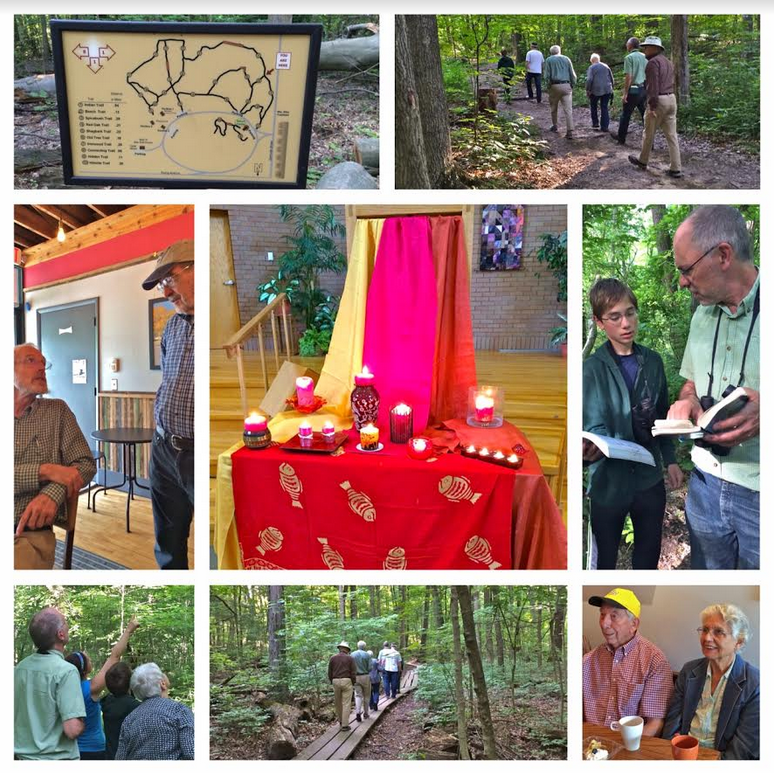
Area group exercises Pentecost living
Marty led us a mile and a half into and out of the woods Saturday on a western area group bird hike at Rum Village Park. We were not a huge group…eight of us, including Marty’s parents and a friend. Maybe not such a successful turn-out if numbers are your measuring stick.
But participant numbers did not count on this trip, which fell on the morning of the Sunburst Races (billed as “one of the premier regional running events in the Midwest”), near the end of the Best. Week. Ever. in South Bend (meaning folks may have been tuckered out by the unceasing activity in our town), and just a few hours before a Catholic Worker/Near Northwest Neighborhood wedding to which a number of our area group families were invited as guests.
Precise numbers of birds spotted did count for Marty’s report to ebird.org (Cornell Lab of Ornithology). His list revealed that, on our hour and a half walk, we saw 2 Mourning Doves, 3 Red-bellied Woodpeckers, 2 Downy Woodpeckers, 1 Eastern Wood-Pewee, 5 Empidonax (a genus, rather than a species, meaning Marty couldn’t quite pinpoint which of 15 species might have flown into view, though I heard him mention the Least Flycatcher on our hike), 2 Red-eyed Vireos, 2 Blue Jays, 2 White-breasted Nuthatches, 1 Wood Thrush, 6 American Robins, 2 Chipping Sparrows, 5 Northern Cardinals, 1 Common Grackle, 4 Brown-headed Cowbirds, and 1 American Goldfinch.
In an interview with philosopher Sam Keen, Spirituality & Practice website founder Frederic Brussat asks Keen about birders as mystics. Keen responds: “Birders are instinctively reverential and thankful for all the multicolored angels that appear out of the void—free, no hidden charges. Birders know how to wait, be silent, and adore—essential spiritual disciplines.”
Kevin Kummer’s essay on Birdwatching and Prayer lists four spiritual disciplines he has learned from birding that he says have enriched his life. Suggesting that both bird watching and prayer have to do with seeing, Kummer notes that “when I do slow down enough to see with my eyes and actually observe the world around me, I am awed by what I see….Unless I consciously choose to alter my pace and pay attention, I miss much of what is all around me in the physical world.”
Kummer also notes that “I find that my ears, when alert, are the best tools I have for locating a bird in the first place. A call, the rustle of leaves, or the whirr of wings gets my attention and turns my eyes in the right direction. Seeing and hearing work together. In contemplative prayer, to hear requires not only slowing down and paying attention, but also stillness.”
Thirdly Kummer relates that guides and guidebooks have mentored his birding acumen even as authors like C. S. Lewis, Annie Dillard, and Eugene Peterson have been spiritual mentors to him. “I have lived amidst birds my whole life—as we all have—but it wasn’t until I got hold of a guide book that I learned to recognize, identify, and get to know particular birds. I had to be mentored in seeing. Learning what to look for and how to look was not automatic and I gained a great deal by learning from those who were more experienced than I but whose wonder and love of birds I shared.”
Kummer’s fourth discipline relating to both prayer and bird-watching is taking notes and making records. “I have discovered that a notebook and pen are tremendous aides to seeing, hearing, reflecting, writing, and praying….The act of recording, describing, reflecting, and savoring what I see deepens the impression made on me by a bird or the Spirit.”
We are grateful to Marty, who will start high school in the fall, for mentoring us by sharing his enthusiastic love of birding, which began just over a year ago, according to his father, on a family birding excursion. Marty taught us by example that seeing, listening, and record-keeping are important for would-be birders as well as persons of faith. He reminded us in advance of our hike that binoculars are key and demonstrated the importance of guidebooks, showing us, too, the pouch he created inside his sweatshirt to carry his guidebook! His knowledge of bird identification, bird calls, bird behaviors and habitats amazes me.
Our morning together concluded at the Near Northwest Neighborhood’s Local Cup, a pay-it-forward coffee shop, where four more of our area group members joined us, including Homer and Betty, who were celebrating their 61st anniversary that very day; they took time earlier that morning to cheer on son Jim, who ran the half marathon. Jim arrived eventually (it was good to congratulate both him and his parents), and Turfena popped in to say hello from her home nearby.
We all enjoyed meeting a retired Episcopalian priest who visited the coffee shop. He shared that he’s about to make a “very public announcement in agreement with the Paris Accord by installing solar panels” on his house. Vic, who spearheaded KRMC’s recent solar installation project, made a quick connection and they will be in touch.
As I listened to Lane’s Pentecost sermon on Sunday and his proclamation that “Pentecost makes the newly birthed church a place of connection from God to people and people to God,” it struck me that our neighborly coffee shop connections, Marty’s mentoring, and the disciplines we began to exercise in birding are most certainly a part of Pentecost living.
If you are a bird-watcher or are considering getting more involved in birding as hobby or spiritual discipline, you might enjoy this film review of Birders: The Central Park Effect at the Spirituality & Practice website. The review states that “filmmaker Jeffrey Kimball has done a remarkable job, giving us insights into (birders’) passion and pleasure in what we recognize as spiritual practices: questing, paying attention, seeking beauty, and being truly present...”
Add a commentMay 29, 2017
By Jane Bishop Halteman
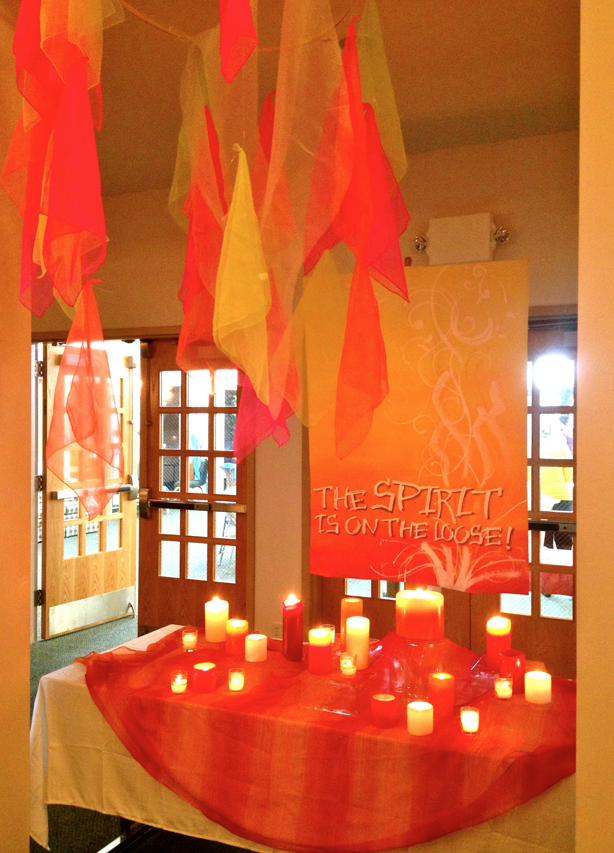
Pentecost worship visual created at Creekside Church of the Brethren, Elkhart, IN
Next Sunday we will observe Pentecost, which falls on the seventh Sunday after Easter and marks, on the liturgical calendar, the coming of the Holy Spirit and the birthday of the church. The annual festival also invites us as individuals to notice Divine movement in our individual lives and calls us to share stories of the Spirit on the loose.
For the disciples, now missing the physical presence of Jesus who had ascended 10 days earlier according to Biblical tradition, the descent of the Holy Spirit was a reminder that Jesus would always be with them; the wind and fire of the Spirit bolstered their courage to carry on the Kingdom work Jesus had begun.
Some years ago in a post at Mustard Seed Associates’ Godspace website, Christine Sine said this about Pentecost: “As the Holy Spirit fell on the disciples, the barriers of language and culture were broken down, not so that everyone thought and looked the same, but so that everyone understood each other in their own language and culture. This festival draws us beyond the resurrection to remind us that through the coming of the Holy Spirit we become part of a transnational community from every nation, culture, and social class.”
Joan Chittister, in her Essential Writings, adds this about the Spirit: “The Spirit of God moves us to new heights of understanding, to new types of witness, to new dimensions of life needed in the here and now. The static dies under the impulse of the Spirit of a creating God. We do not live in the past. We are not blind beggars on a dark road groping our separate ways toward God. There is a magnet in each of us, a gift for God that repels deceit and impels us toward good. The gifts are mutual, mitered to fit into one another for strength and surety.”
Pastor Janice’s sermon yesterday, based on verses 15-23 of Ephesians 1, seemed the perfect lead-up to next week’s Pentecost worship service as she spoke of how one’s personal sense of being the beloved child of God nourishes deep faith.
She compared developing faith to the escalating nature of a fireworks display, referencing South Bend’s Best. Week. Ever. fireworks event coming Friday (see Best. Week. Ever. schedule here). The first lone firework catches our attention, and ultimately the show crescendos to a grand finale as excitement builds. In similar fashion, she said, “Something comes into our lives like that first firework; the fireworks of God’s love continue to go off, (though) sometimes with long pauses between,” she acknowledged.
Based on the example set by my first spiritual director, I often have found myself asking a new directee whether or not she identifies as the beloved daughter of God. I recall journaling in bewilderment about that moment when my spiritual director asked me that question. Months, maybe even years later, the significance began to dawn on me, but initially, I found the question difficult to hear, imagining it presumptuous or perhaps even impertinent to claim myself beloved by the Divine.
In the words of Sarah Brock, writing for Episcopal Café, “It’s one thing to speak God’s love, another to know it, and entirely different to feel it deep in your soul. I have rarely set aside time and space to just be loved. Whether that love comes to us in a kind gesture from a neighbor, a hug at just the right moment, or in the silence of a holy place, it’s always there embedded in our souls, flooding into our awareness, sometimes when we least expect it.”
Pentecost, it seems to me, ritualizes the raining down of Divine love as the aggressive imagery of wind and fire promises not to desert us. The Ephesians passage from yesterday’s sermon, Janice said, reveals a high view of the church, the conduit by which the Divine message reaches others, “how love and mercy and grace get showered on the world. Fireworks are meant to be displayed in a crowd so we can ooh and aah with others!”
In the wake of tragedies like this past week’s Manchester suicide bombing, this article on How social ties make us resilient to trauma further reminds me that “as we struggle to find words to express our shock and sympathy for those who were harmed, we should not forget the healing power of building connections to each other.”
And this Parker Palmer post offers, in the spirit of Pentecost, a Rilke poem urging “us to live life to the fullest, fearing no danger, and ‘flaring up like flame’” so that we might “take life-giving risks as opportunity arises—life-giving not only for me but also for others. When I feel afraid to live that way, I turn to the poem’s final line, which reminds me that I can always find the comfort of companionship on the way.”
In what ways have you glimpsed the infinite, abundant companionship/love of the Divine and others on the journey? Have you taken stock of what might be impeding your view?
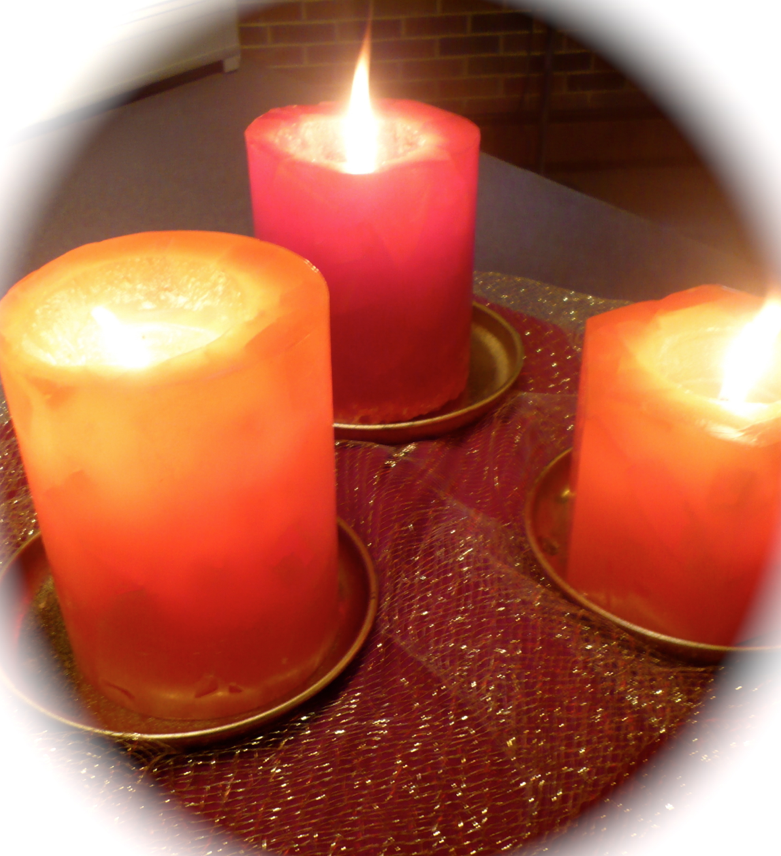
May 22, 2017
By Jane Bishop Halteman
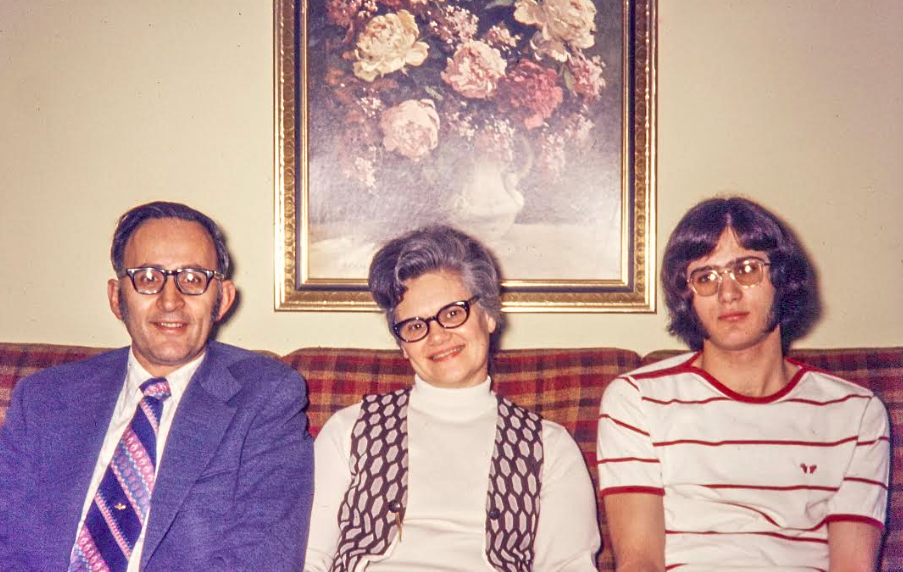
Photo by Dan Longenecker
Today, May 22, marks my youngest brother, Greg’s, 61st birthday. He celebrated his last earthly birthday 43 years ago just months before a single-car accident took his life on October 15, 1974, at 18 years of age.
By happy coincidence or divine intervention, just in time for us to observe Greg's birthday, KRMCer Fred sent me the above photo three days ago of my mom and dad and Greg in their home back in the early 1970s. Fred’s dad Dan served as pastor at my parents’ church in eastern Pennsylvania from 1973-1978. An elementary schooler at the time, Fred does not recall much about Greg, whom he had known only a short time before Greg’s death.
On the evening of the crash just a mile or so from home, my parents had arrived back from visiting us and our six-month-old son in our new home in Upland, IN, where Jim had taken his first job as an economics professor at Taylor University. Greg had helped us move in July with baby Matt, and we saw Greg again in August, when this family photo (below) was taken. My apparently superstitious great grandmother reminded us after Greg's death that it is not uncommon for someone to die after a family photo is taken.
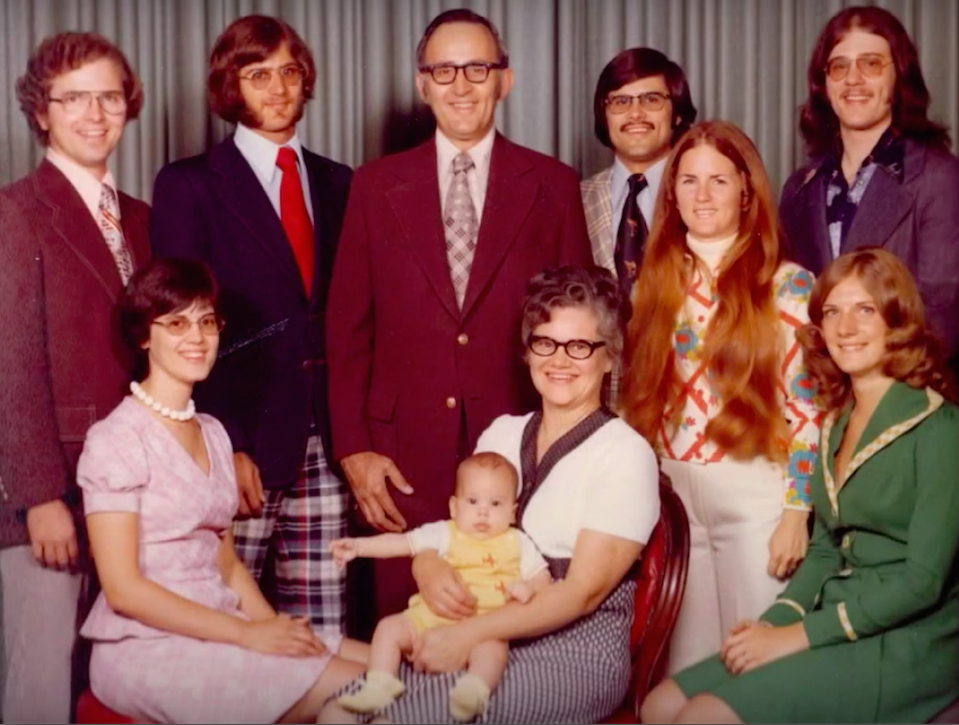
Mom and dad returned home to a police car waiting in their driveway. As a nurse with ER experience, my mother knew instinctively that their son likely already was gone after the police confirmed with them the kind of car he was driving. The shocking news reached us at midnight that evening, and we left the next morning for the long trip back to the distant suburbs of Philadelphia, stopping for a short time in central PA to visit briefly with our former small group in State College where we had spent the last five years.
Greg’s death came 12 years after another bereavement that numbed me to the possibility of experiencing new pain; almost no processing about the two consequential deaths took place for many years, but, after meeting a companion for the grief journey seven years ago, the unfolding of the first loss began, eventually sparking momentum to delve into unpacking the untended grief around my brother’s death.
During a visit this past April to see mom and dad in their personal care unit at a Mennonite retirement community, brother Tom crossed paths, quite serendipitously, with a volunteer fireman who was an emergency responder at the scene of Greg’s accident.
Now 75 years old and mayor of our small hometown, the fireman shared his memories of that night over lunch with me this past week; I could feel old grief beginning to green to gift and grace as he recounted how the fire department got a call on that fateful night from the county to a “rescue” operation, meaning there was a chance the victim might be alive.
The story our family had been told these many years mentioned a Catholic neighbor who reportedly heard the crash and went outside to where our brother lay on the ground, still breathing. She stayed with him, the story goes, until his heart stopped beating. In my mind, I see her tenderly holding his hand, but I can’t vouch for whether or not that part is fact or wishful thinking.
According to police reports, our brother had passed a car on wet streets and, on returning to his lane, apparently had been thrown off the highway. These many years later, the mayor confirmed that, yes, Greg appeared to have flown out of the car (before seat belts were required) landing on his back, at which point the car flipped upside down on top of him. At 33 years old then, the mayor recalls thinking, “Greg is so young; this can't be.” Noting that this was his first experience with the death of one so young, the former fireman also remembered compassionately that “he looked so peaceful,” a gift for family to hear so many years later.
After I told him a tiny bit about the grief work I’ve been doing the last seven years, the mayor shared about losing his own dad at 16 while they were playing ball together, losing his first wife to breast cancer when she was 42, and now standing strong by his daughter as she confronts breast cancer at 49. I was struck by his willingness to be vulnerable with a near-stranger, though not surprised since we had shared stories of personal pain with one another.
We certainly didn’t call our interaction over lunch that day communion, but it definitely was a kind of breaking bread together. The mayor thinks he may know the neighbor woman who crossed the street to companion Greg in his last moments. She is now in her early 80s, of sound mind, and still lives in the same house. “I run into her now and again,” he said. “I’ll ask her if she was there.” If she is the one who stood by our brother so graciously in those final moments, I will be in touch so that the green shoots of redemption might continue to yield gift and grace.
My parents, brothers Tom and Dave, and I continue to celebrate Greg’s birthday in gratitude for the 18 years of life given him, the all-too-brief time we shared together. We remember him well in a variety of ways...by excavating our own pain, by speaking of him and learning more about the accident which took him from us so suddenly, by sharing memories with others who knew him. Mom and dad are forever grateful for the two years immediately after Greg's death during which his high school friends visited every Sunday night seeking companionship with each other and mom and dad in this loss.
High school friend and band compatriot Eric told us again just this past weekend that he continues to jam with Greg’s (and the band’s) music from all those years ago. Meeting Greg’s high school friend Ted unexpectedly at church Sunday morning added another mystical moment to the birthday weekend, not to mention the fact that friends from so long ago in State College showed up as visitors at the same church Sunday where I was a guest and recalled that we returned in October 1974 on the way to my brother's funeral, without knowledge that today is his birthday or that I was preparing this post. That all of these moments took place on Greg's birthday weekend are indeed sparks of light in this resurrection season!
Creation of this youtube video of memories of Greg a few years back became another redemptive mechanism for managing life after loss. The video continues to reinforce the fact that our short time together was more than just a blip on the screen and reminds us of his quirky sense of humor as we see Greg posing in these old pictures with an icicle, breakfast cereal, a carrot, a chicken leg. Only Greg...
In what ways have you experienced gift and grace emerging from past personal pain? How has the Divine led you to new landscapes in the midst of aches you once feared would devour you?
Add a commentMay 15, 2017
By Jane Bishop Halteman
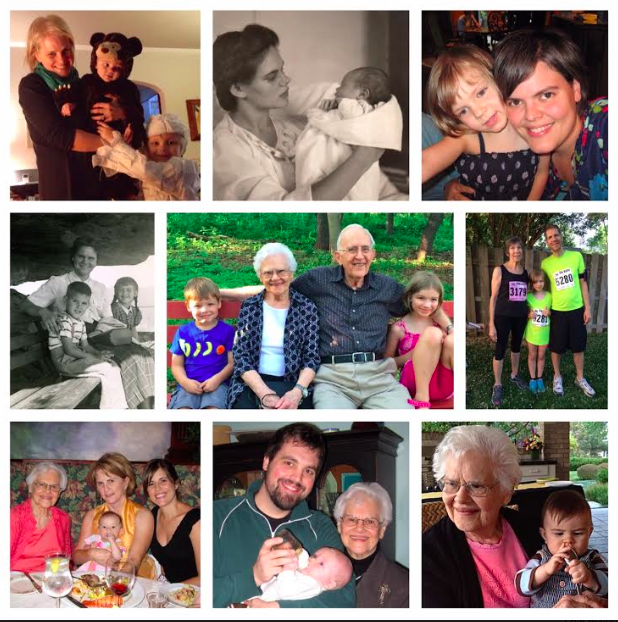
Moms and their kids, grandkids, and great grandkids
The occasion of our culture’s Mother’s Day reminds me, in the words of Spirituality & Practice website founders Frederic and Mary Ann Brussat, that “the most common word association with nurturing is mothering. All of us, male and female, single or married, old or young have the potential to give birth and raise something in the world. In a prayer written for Mother's Day, Pamela Spence Bakker uses the following images...some of us give birth to: children, ideas, art, music. Some of us raise: animals, flowers, or vegetables, our friends, our parents, our brothers and sisters, interest in a cause, money for charity, concerns, our voices against injustice, our eyebrows, Cain.”
Wise folks that they are, the Brussats note that “we are aware that to some people, Mother's Day seems to be a holiday concocted by the greeting card and floral companies, a cultural holiday dominated by consumer pressures. For those whose mothers have died or are distant, and for those who have never been mothers, the day touches other sensitivities. But we think any ‘problem’ with Mother's Day is just because typically it is defined too narrowly. There are many mothers in all our lives and many kinds of mothering experiences.”
John O’Donohue offers a Blessing for Mother in his book, To Bless the Space Between Us. He speaks of a mother’s voice, a mother’s eyes, a mother’s nearness as a few of the earliest influences on a child’s life that typically come from a nurturing, mothering figure. My own mother extended her nurturing, mothering spirit to many outside our family from as far back as I can recall. She sewed on buttons for neighborhood kids whose moms didn’t know how or couldn’t take the time, she shared meals generously with family and friends and guest speakers at our Sunday dinner table, she gave of herself to offer comfort and care as a nurse in a retirement community, an operating room, a private practice office.
After my youngest brother died at 18 in a car accident, mom reached out to other women who lost children tragically. When she moved to a retirement community with my dad in 1992, she began nurturing older residents who needed assistance she was able to provide, volunteered to take wellness blood pressures, and eventually began walking my mother-in-law to dementia day care when it became difficult for my father-in-law to do that.
Jan Richardson suggests that “our mothers are our first landscape, our original terrain, creating us and sheltering us in the space of their own body. When we have mothers who know, or learn along the way, how to keep creating the landscape for us and with us—when they can fashion a terrain that provides both sanctuary and the freedom to find the contours of our own life—that is gift indeed.”
Knowing that not all of us have benefited from living in a household with a naturally nurturing mother, Richardson wisely says, “I offer prayers for those women who, owing to the gaps and fissures in their own landscape, have left pain and emptiness in the space where a mother should have been. For those who choose to enter into the empty, motherless places—the ‘othermothers’ who come in the form of teachers, grandmothers, aunts, sisters, neighbors, friends—bless you and thank you for your mothering hearts.”
Richardson shares her Blessing the Mothers prayer at this link.
Besides the nurturing role model of my own mother, I am grateful for many other mothering figures in my life, some female, some male: the childhood neighbor who scooped me up and held me close after I rolled down a hill into a wagon wheel that had lost its rubber tire; the grade school teachers who recognized the diligence of a shy student; the college prof who believed I could write and continued to inspire many years after graduation; the bosses and managers who offered encouraging words for work well done and strategized new challenges; the authors who blessed with their profound thoughts and life-changing ways of being; the pastors who aroused interest in the contemplative; the family members who noticed and honored and thanked; the old and new friends who applauded what I birthed and raised in the world; the spiritual directors who stood by as advocates no matter what.
Who are some of the many nurturing mothers in your life? How do you pass on the nurturing experiences with which you have been blessed? How have you experienced the feminine love of the Divine through mothering love?
Add a comment

